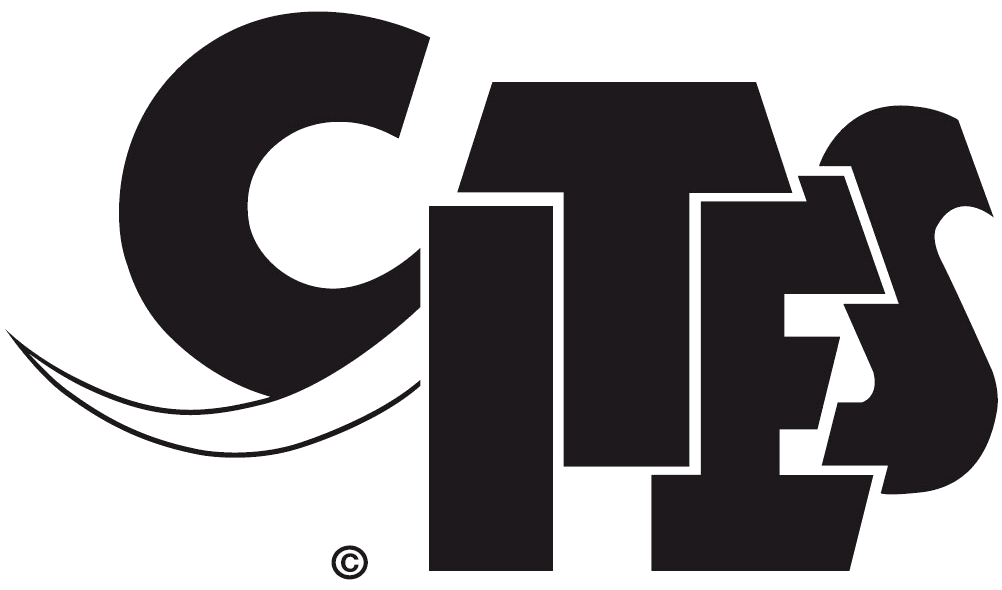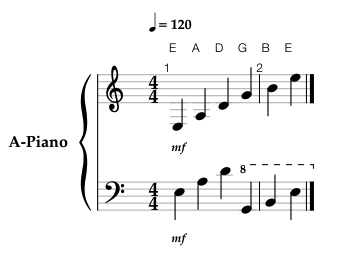
Allegra
Hi, I'm Allegra, your virtual assistant. I'm here to help you. What's your name?
Hello [q1], what is the best way to contact you?
Email
Phone
Text Message
No Response Required
Log into Student Resources
What Email address should we use to contact you?
What telephone number should we use to contact you?
What mobile number should we use to contact you by text?
Thank you. What may I help you with today?
What instruments do you give lessons for?
What equipment do I need for on-line lessons?
I have a technical issue regarding online lessons.
Helpful information for beginners.
Although we mainly teach guitar we can do lessons for many other instruments. Click on an image for futher information or continue.
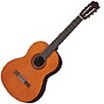
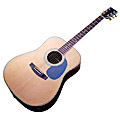

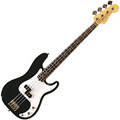

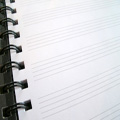
Classical Guitar

Acoustic Guitar

Electric Guitar

Bass Guitar

Ukulele

Theory of Music

The Classical Guitar has a wider fingerboard and nylon strings, although 3 of these are coated with steel. Played with the fingers, it's the best starter guitar for younger children. Teenagers and adults would use this style of guitar to play Classical music.
Do you need further information?
I'd like to Book a Trial lesson
Go back to Main Menu
No. I've finished my search
The Acoustic Guitar has steel strings and is played with a pick or with the fingers. Although a very versatile instrument, it suffers from being the hardest to actually finger as it has thicker strings which need more pressure. The Acoustic Guitar is primarily used for playing chords in the early days.
Do you need further information?
I'd like to Book a Trial Lesson
Go back to Main Menu
No, I've finished my search
The Electric Guitar is probably the easiest to get instant gratification on. It has a slimmer, narrower neck than the other two and is primarily played with a pick. It does need some form of amplification though. Although smaller children versions are available they do suffer from major tuning problems due to the tension of the strings so we do not recommend starting to learn until the age of around 9 or 10.
Do you need further information?
I'd like to Book a Trial Lesson
Go back to Main Menu
No. I've finished my search
The Bass Guitar was invented to replace the double bass. It generally has 4 strings and is tuned an octave lower than a guitar. Although mostly played one note at a time, there is a lot of technique and it can be a demanding instrument to learn. More advanced students may well graduate onto a 5 string bass. For specialists there are even 6 and 7 string basses. The bass guitar is much more fun to learn than one would expect. An amplifier is required to play one.
Do you need further information?
I'd like to Book a Trial Lesson
Go back to Main Menu
No. I've finished my search
Please contact us if you do not find the answer to your question
Click to access my main menu

What else would you like to know about Classical Guitars?
Are there different sizes of Classical Guitar?
Are they expensive to buy
How much do lessons cost?
They come in various sizes. The common sizings are 1/4, 1/2, 3/4 and 4/4 although they can also be measured by length. Enter the age of the student below to see the recommended size.
You would need a 1/4 size or 30" classical guitar. Quarter size guitars do not have a lengthy useful life as children grow out of them quite quickly. Only recommended for dedicated students.
You would need a 1/2" or 34" classical guitar. This is the most common size for young beginners to use.
You would need a 3/4 or 36" classical guitar. These are appreciably larger than the 1/2 size but are large enough to be used past the time you would normally swap to the full size guitar if needed.
You would need a 4/4 or 39" classical guitar, sometimes called a full size. For an adult student iI recommend obtaining the best quality guitar you can get.
I'd like to Book a Trial Lesson
Go back to Main Menu
I've finished my search.
Prices can vary so I've just given you a rough guide below. For serious older students you can expect to pay more than this for a decent guitar, possibly many hundreds of pounds. If you need any advice on a purchase please contact us. Sometimes we even have guitars to sell.
Cost of 1/4 size
Cost of 1/2 size
Cost of 3/4 size
Cost of 4/4 size
Contrary to belief, the Ukulele did not originate in Hawaii but was introduced by Portugese immigrants from Madeira. They brought a small, four string guitar called a machête with them. The Hawaiian's took to the instrument and virtually adopted it as their own. There were some changes though. The machête was tuned D - G - B - D but the Ukulele adopted the tuning of another Portugese instrument, the rajão. This was a 5 string instrument but they ignored the low D and set the tuning to the top 4 strings. G - C - E - A became the standard 'My Dog Has Fleas' tuning from then on.




Bass Ukulele
Ukuleles are available in 4 sizes, Soprano, Concert, Tenor and Baritone. They are usually the same shape but lately, thanks to the huge popularity of them, you can find some in the shape of well known guitars and other oddities. A modern take on the ukulele saw the introduction of the Ukulele Bass. These are tuned to the same notes as a bass guitar. Originally an octave higher, they are now available playing the same pitch.
Do you need further information?
I'd like to Book a Trial Lesson
Go back to Main Menu
I've finished my search.
What do you want to ask?
What sizes are there and how much do they cost?
At what age can you start playing the Ukulele?
How much are Ukulele lessons?
I'd like to Book a Trial Lesson
Go back to Main Menu
I've finished my search.
1/4 size classical guitars are generally slightly dearer than the 1/2 size as not so many of them are made. However, there's lots of choice around £40 to £60. These are going to be used by very young children and they will get marked.
I'd like to Book a Trial Lesson
Go back to Main Menu
I've finished my search.
1/2 size classical guitars can be had for a very reasonable £25 but obviously quality is poor. However, there's lots of choice around £40 to £60.
I'd like to Book a Trial Lesson
Go back to Main Menu
I've finished my search.
3/4 size classical guitars start at around £39 but most are priced between £60 and £90. Higher quality ones will cost more.
I'd like to Book a Trial Lesson
Go back to Main Menu
I've finished my search.
4/4 or full size classical guitars start at around £50 but can go into thousands. For a beginner, a sub £100 guitar should be ok
I'd like to Book a Trial Lesson
Go back to Main Menu
I've finished my search.
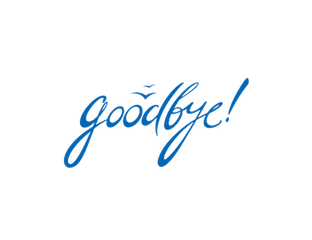
Trial lessons cost £10 for half an hour. Would you like to see our full list of fees?
Yes. Go to our Lesson Fees page.
No. I'd like to Book a Trial Lesson
Go back to Main Menu
I've finished my search.

Thank you for Asking Allegra.
Should you wish to Contact Us for any reason please follow the link to the contact form.
Should you wish to Contact Us for any reason please follow the link to the contact form.
What else would you like to know about Acoustic Guitars?
Are there different types?
What type is best for a younger student?
Is a new guitar better than a second hand?
How much do they cost?
What is an electro-acoustic?
I've seen a steel bodied guitar. What is it?
How much do lessons cost?
Here are the main acoustic guitar body shapes


Parlour: Originally made for ladies to play in the 'Parlour', these small bodied guitars suit finger style playing. They tend to sound boxy. There is no standard size for these. Continue
OM: Standing for Orchestral Model, these sound good for both strumming and finger picking although they don't excel at either. They are a good size to learn on though as they are a good size to sit down with. Continue
Grand Auditorium: These are slightly larger than the OM and have a cut away section to allow easier fingering to the top of the fingerboard. These are generally electro-acoustic guitars meaning they have a built-in pick-up to amplify their sound through an amplifier. Continue
Dreadnought: This is the most widely available body shape which produces a good volume and louder bass frequencies. These are available in a range of different woods and varying colours. Some do have a pick-up fitted as well. Continue
Slope-Shouldered Dreadnought: A creation of the Gibson company. They are said to have less deepness and a more balanced tone, however, there are a lot of other factors that will influence the tone of a guitar so the mantra is, if you like the sound, you buy one. Continue
Jumbo: As the name implies, these are the big boys. They are louder than a dreadnought due to them having more wood to vibrate. You can get these with a built-in pick-up and even with a cutaway. Continue
Go back to Main Menu
Would you like some more information on Acoustic Guitars
What type of wood is used to make Acoustic guitars?
Is a Laminated Top as good as a Solid Top?
Is the wood used sustainable?
Go back to Main Menu
Thank you for Asking Allegra.
Should you wish to Contact Us for any reason please follow the link to the contact form.
Should you wish to Contact Us for any reason please follow the link to the contact form.
Thank you for Asking Allegra.
Should you wish to Contact Us for any reason please follow the link to the contact form.
Should you wish to Contact Us for any reason please follow the link to the contact form.
Thank you for Asking Allegra.
Should you wish to Contact Us for any reason please follow the link to the contact form.
Should you wish to Contact Us for any reason please follow the link to the contact form.
ENTER YOUR PASSWORD
There are many types of woods used and the top is generally made of a different wood to the back and side. Even the neck can be made of another wood. The most important part of the guitar is the Top. The Bridge sits on the top transmitting the vibration of the strings to the Top or soundboard. Each type of wood has it's own characteristics. It can be warm or bright. Have depth or overtones. Suit hard playing or soft fingerpicking. The most important thing is, do you like the sound?
Here are some of the most popular woods used with a description of their tonal characters.
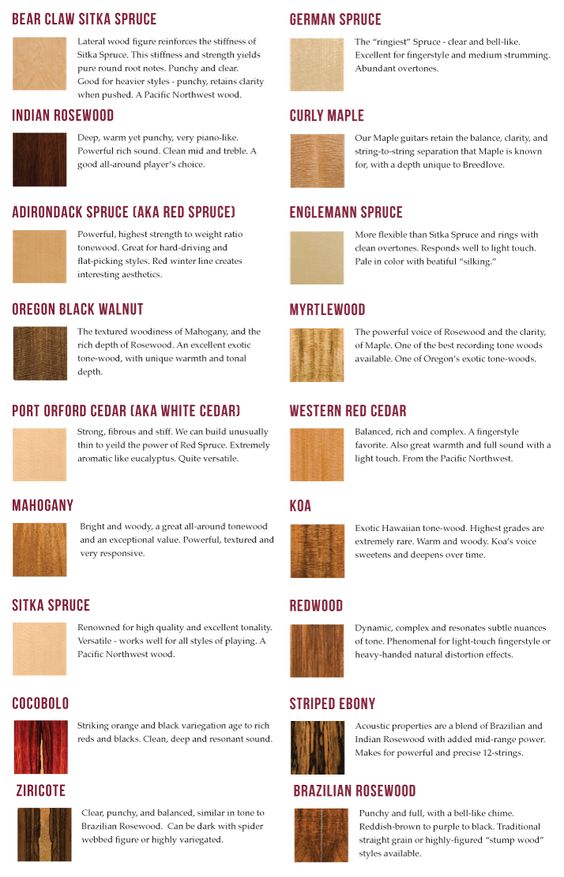

Spruce is probably the most common wood used for guitar tops and is commonly paired with Rosewood for the neck, back and sides. It is a light colour and gives a good bright sound. Cedar is a deeper colour and gives a warmer sound. You'll see Cedar used a lot for Spanish guitars. On massed produced guitars these days you will find there are lots of unrecognisable woods being used in an attempt to use more sustainable trees.
Go back to Main Menu
I've finished my search.
A Laminated top consists of layers of wood compressed together. Although the top layer is generally a decent tone wood the overall response is lacking. Good tone woods have grains that will seperate slightly the more the guitar is played giving a finer tone. Whenever possible it's best to get a solid top guitar and these start at a reasonable price. There are good Laminated top guitars which will give a good enough tone to learn on. Some of these also feature coloured finishes as well. Better quality guitars will be stained rather than painted and some will even have the lightest of lacquers to allow the wood to vibrate more easily. The backs and sides are more commonly laminated although again, better quality guitars will have solid backs and sides as well.
Below is an example from Cordoba guitars showing how the different combinations of wood effect the tone of their guitars.


Go back to Main Menu
I've finished my search.
Yes. Companies now have to prove their wood comes from a sustainable source. Brazilian Rosewood was the favourite for guitar backs but that has now been superceded by Indian Rosewood due to restrictions. Guitar manufacturers are now looking after the forests their woods come from as there is a shortage of decent tonewoods. The slower the forests grow the higher quality the resulting tone wood is and with restrictions being placed on many exotic woods, guitar manufacturers have become very environmentally aware. Due to the CITES convention, it is basically illegal to import any guitar made using Rosewood into the EU and UK without the proper certification.
For further information click on image to visit CITES website.
Go back to Main Menu
I've finished my search.
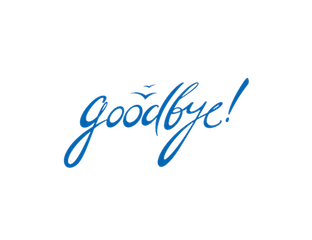
Thank you for Asking Allegra.
Should you wish to Contact Us for any reason please follow the link to the contact form.
Should you wish to Contact Us for any reason please follow the link to the contact form.

Thank you for Asking Allegra.
Should you wish to Contact Us for any reason please follow the link to the contact form.
Should you wish to Contact Us for any reason please follow the link to the contact form.

Thank you for Asking Allegra.
Should you wish to Contact Us for any reason please follow the link to the contact form.
Should you wish to Contact Us for any reason please follow the link to the contact form.
Thank you for Asking Allegra.
Should you wish to Contact Us for any reason please follow the link to the contact form.
Should you wish to Contact Us for any reason please follow the link to the contact form.
Thank you for Asking Allegra.
Should you wish to Contact Us for any reason please follow the link to the contact form.
Should you wish to Contact Us for any reason please follow the link to the contact form.
Thank you for Asking Allegra.
Should you wish to Contact Us for any reason please follow the link to the contact form.
Should you wish to Contact Us for any reason please follow the link to the contact form.



Thank you for Asking Allegra.
Should you wish to Contact Us for any reason please follow the link to the contact form.
Should you wish to Contact Us for any reason please follow the link to the contact form.
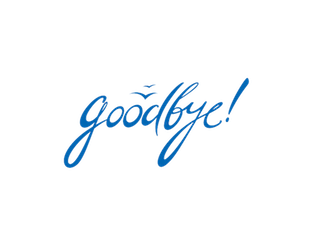
You can get 3/4 or even 1/2 size Acoustic Guitars for Children. They are cheaply made and are not made to the same exacting standards as most full sized guitars. They will serve the purpose though and are cheap enough to dispose of when the child outgrows them and will take the ocassional knock. A Parlour size or Travel size guitar is a better investment as it will carry on being of use when your child grows up. Some of these will also benefit from having an internal pick-up.
1/2 size steel strung guitars are more like toys. They suffer from poor tuning as string tension is less on the shorter neck.
We have a page on our web site to help your choice of guitar. Visit Guitar Page.
Our on-line shop is currently being redeveloped. We do have a limited number of products on our Music School app. Download it Here.
Go back to Main Menu
I've finished my search.
Thank you for Asking Allegra.
Should you wish to Contact Us for any reason please follow the link to the contact form.
Should you wish to Contact Us for any reason please follow the link to the contact form.
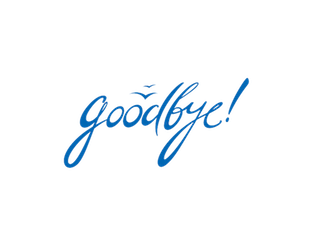
There is no simple answer to this question. Generally speaking, a quality second hand guitar should be better than a cheap guitar but there is no hard and fast rule. A dearer guitar might have mistreated, stored badly, leaned against a radiator etc. A second hand economy guitar could be suffering from a poor action or fatigue on the tuning gears. Once again, if it plays well and you like the sound of it then a second hand guitar could be a better choice to learn on. Recommendations from friends similarly can leave you with a bargain or a poor guitar and then you don't have the warranty you get with a new one. Just adding to you problems, there is no guarantee your new economy guitar is going to be perfect either. We've seen some very poor guitars over the years.
We offer a free service to assess the quality of the guitar you are going to purchase. We can look at your guitar, or currently we are viewing over the internet, and give a report on it's suitability and condition. We also offer a set up and repair service should it need anything doing to it. Contact Us for details.
You can book a service or set up and order spare parts through our Music School app. Download App.
Go back to Main Menu
I've finished my search.
Thank you for Asking Allegra.
Should you wish to Contact Us for any reason please follow the link to the contact form.
Should you wish to Contact Us for any reason please follow the link to the contact form.

A rough guide to guitar prices is shown below.
Prices shown are for economy starter models.
3/4 Guitars are available from around £50. Student guitars can go up to £150 for better quality instruments.
Full size guitars start from around £60 and there is a good choice of sub £100 guitars available.
Travel guitars start around £70 but we recommend you pay closer to £150/£200 to get a quality instrument.
We recommend paying from £150 for a Parlour guitar. You will then have a guitar worth keeping.
Go back to Main Menu
I've finished my search.
Thank you for Asking Allegra.
Should you wish to Contact Us for any reason please follow the link to the contact form.
Should you wish to Contact Us for any reason please follow the link to the contact form.

An Electro-Acoustic is an Acoustic Guitar with a built-in pickup allowing it to be amplified. There are two main types of pickup that can be installed in various ways in your guitar. The output from the pickup is usually through a jack socket which can be self contained or part of a combined socket and strap button. Dearer pickups can also feature an XLR balanced line output as well. Most pickups use a built in preamp although some are made that do not require one or use an external preamp.
Most acoustic instruments can be amplified and various methods are used. As well as built-in pickups on Electro-Acoustic Guitars, you can also use detachable sound hole pickups or stick on bugs or amplify a regular Acoustic Guitar.
Piezo under saddle pick-ups
Internal Microphones
External pick-ups
Go back to Main Menu
Piezo pickups work by picking up physical vibrations but they can't capture the resonance of the body or any ambient sound. They give a sharp attack and fairly brittle sound but on a positive note, they are not prone to feedback making them very useful in louder situations. Generally, they are fitted under the bridge saddle meaning it's best to buy a guitar with one ready fitted unless your are competent with woodworking tools. Because they only pick up vibrations they are also suitable for nylon strung guitars.
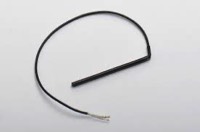 The most common piezo is made in a strip which is fitted underneath the saddle of your guitar. This can then be connected to an internal preamp or even directly to the output jack depending on model.
The most common piezo is made in a strip which is fitted underneath the saddle of your guitar. This can then be connected to an internal preamp or even directly to the output jack depending on model.
 The piezo pickup will supplied with bare wires or with a plug ready to plug into an internal preamp. As these pickups are normally factory fitted, hopefully you should not see anything other than some cable inside your guitar.
The piezo pickup will supplied with bare wires or with a plug ready to plug into an internal preamp. As these pickups are normally factory fitted, hopefully you should not see anything other than some cable inside your guitar.
 Some guitars will simply have an output jack and no other controls. These tend to be more expensive as the pickups not needing internal preamps are more expensive. This picture shows a basic control panel but they can be as simple as just two knobs controlling volume and tone.
Some guitars will simply have an output jack and no other controls. These tend to be more expensive as the pickups not needing internal preamps are more expensive. This picture shows a basic control panel but they can be as simple as just two knobs controlling volume and tone.
 Here we have a control panel that features sliders instead of knobs. You can see it has a display panel as well. This usually indicates that the preamp also has a built-in guitar tuner. These are generally very accurate and save you from having to use an external tuning device.
Here we have a control panel that features sliders instead of knobs. You can see it has a display panel as well. This usually indicates that the preamp also has a built-in guitar tuner. These are generally very accurate and save you from having to use an external tuning device.








The output from the guitar is generally through a jack plug socket which takes a standard guitar cable. This might be integrated within the strap button. More expensive guitars might feature a jack socket plus a balanced XLR output. Preamps that are mounted in the sides of the guitar will have a battery box as well holding a PP3 battery. If your Piezo pickup fails to produce sound a flat battery is usually the cause.
Go back to Main Menu
I've finished my search.
Thank you for Asking Allegra.
Should you wish to Contact Us for any reason please follow the link to the contact form.
Should you wish to Contact Us for any reason please follow the link to the contact form.

Internal Microphones are not common. They are small microphones fitted inside the guitar body. They are not very powerful so are usually paired up with a Piezo as well. When paired there could well be a balance control to get the correct tone you require. They give a more realistic recreation of the tone of your guitar but the downside is they are prone to feedback.
 Here we can see a complete pickup system featuring an internal Microphone and an under saddle Piezo complete with preamp with tuner and balance control. The output socket is supplied with both Jack and XLR outputs and an integral battery compartment.
Here we can see a complete pickup system featuring an internal Microphone and an under saddle Piezo complete with preamp with tuner and balance control. The output socket is supplied with both Jack and XLR outputs and an integral battery compartment.
 Here you can see where the internal Microphone would be positioned in the sound hole under the strings.
Here you can see where the internal Microphone would be positioned in the sound hole under the strings.
 Worthy of mention here, although not an internal Pickup or Microphone, is the external mounting bracket which holds a microphone over the top of the sound hole.
Worthy of mention here, although not an internal Pickup or Microphone, is the external mounting bracket which holds a microphone over the top of the sound hole.



Go back to Main Menu
I've finished my search.
Thank you for Asking Allegra.
Should you wish to Contact Us for any reason please follow the link to the contact form.
Should you wish to Contact Us for any reason please follow the link to the contact form.

The most common external pick up is the Sound Hole Magnetic pickup. These are designed to clip across the sounhole of the guitar where they pick up the vibration of the guitar strings due to interference with a magnetic field. There are many to choose from, some economy ones and others that can go over £100 pounds. They give a warmer sound than Piezo pickips with more detail in the sound although they still won't capture the resonance of the guitar. They are easy to fit as they generally just clip into the sound hole. Normally, an attached cable will trail from the pickup to plug into an amplifier. Some guitars might have a semi permanent installation with the cable going inside the guitar to the jack socket. This was quite common in guitars from the last Century. Their downside is that they are prone to feedback. As they are similar to electric guitar pickups they do have the same characteristics. They will not work on Nylon strung guitars.
 Although most of these are black and show pole pieces lots of the dearer models are designed to enhance the guitar. This Seymour Duncan is covered in a white wood. Some will attach with a screw clamp fitting, this one slots over the sound hole rim and is held in place by foam brackets.
Although most of these are black and show pole pieces lots of the dearer models are designed to enhance the guitar. This Seymour Duncan is covered in a white wood. Some will attach with a screw clamp fitting, this one slots over the sound hole rim and is held in place by foam brackets.
 These are called Oyster picks ups, or Bugs. They are Piezo pickups that are designed to be fixed to instruments using double sided tape. They have a slight advantage over the bridge type piezo in that they can be moved to find a sweet spot on the guitar. These can also be used for other stringed instruments as well.
These are called Oyster picks ups, or Bugs. They are Piezo pickups that are designed to be fixed to instruments using double sided tape. They have a slight advantage over the bridge type piezo in that they can be moved to find a sweet spot on the guitar. These can also be used for other stringed instruments as well.


Go back to Main Menu
I've finished my search.
Thank you for Asking Allegra.
Should you wish to Contact Us for any reason please follow the link to the contact form.
Should you wish to Contact Us for any reason please follow the link to the contact form.

You were probably looking at a Resonator guitar as depicted on the Dire Straits Brothers in Arms Album Cover. Resonator guitars were invented in the 1920s in an attempt to make the acoustic guitar louder when playing with brass instruments. Instead of using the body of the guitar to resonate the sound, they have spun aluminium cones which make an entirely different sound. The bodies are normally made of wood these days although at one time there were a lot of metal bodied resonators made of bell brass and usually nickel plated. The Resonators come in three designs, the tricone which has 3 spun cones, the biscuit or single cone and the spider that has an inverted cone. The resonators feature a standard neck but owing to the sound they make, most are put into open tuning. Square necked resonators are also made. These are known as Dobros after the company that invented them. They are basically a resonator that is played, lap string style, with the fingerboard facing upwards. The string height on these is too high for normal fretting so they are played with a bar in open tuning. There are a lot of different branded resonators available but there are very few manufacturers and most of the lower end guitars come from the same factory.
 The iconic Brothers in Arms album cover by Dire Straits features a metal bodied resonator. The guitar is Mark Knopflers own 1937 National Type O Resonator which he used on many Dire Straits tracks. Incorrectly identified as a Dobro in some publications, this features a brass body, nickel plated, a maple neck with ebony fingerboard and the standard maple bridge. Current day replicas of this guitar sell for around £3000.
The iconic Brothers in Arms album cover by Dire Straits features a metal bodied resonator. The guitar is Mark Knopflers own 1937 National Type O Resonator which he used on many Dire Straits tracks. Incorrectly identified as a Dobro in some publications, this features a brass body, nickel plated, a maple neck with ebony fingerboard and the standard maple bridge. Current day replicas of this guitar sell for around £3000.
 This is a Tricone Resonator. It features three spun cones, 2 on the bass side and one one the treble side of the guitar, interconnected by a metal bridge over which the strings pass. The cones sit in the body, pyramid style with pointed part facing out. This model is made of brass but they have been made of steel and even wood. The Tricone amalgamates the sharp bark of the Biscuit Single Cone with the warmer sustain of the Spider.
This is a Tricone Resonator. It features three spun cones, 2 on the bass side and one one the treble side of the guitar, interconnected by a metal bridge over which the strings pass. The cones sit in the body, pyramid style with pointed part facing out. This model is made of brass but they have been made of steel and even wood. The Tricone amalgamates the sharp bark of the Biscuit Single Cone with the warmer sustain of the Spider.
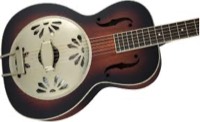 This is a wooden bodied Biscuit or Single Cone Resonator. It features a single spun cone with a maple bridge on top. The cone, again, sits in the body with the point facing out of the guitar. This design gives a very attacking sound but little in the way of sustain. This makes it ideal for blues styles.
This is a wooden bodied Biscuit or Single Cone Resonator. It features a single spun cone with a maple bridge on top. The cone, again, sits in the body with the point facing out of the guitar. This design gives a very attacking sound but little in the way of sustain. This makes it ideal for blues styles.
 This is a wooden bodied Spider Cone Resonator. This features a single spun cone but in this design, the cone point faces the rear of the guitar. This leaves the largest width facing out and a Spider, a metal support that looks like a spiders web, goes over the top to hold the bridge. This design gives more sustain although it tends to be quieter. The Spider is used for a lot of Square Necked Dobros as it gives more sustain.
This is a wooden bodied Spider Cone Resonator. This features a single spun cone but in this design, the cone point faces the rear of the guitar. This leaves the largest width facing out and a Spider, a metal support that looks like a spiders web, goes over the top to hold the bridge. This design gives more sustain although it tends to be quieter. The Spider is used for a lot of Square Necked Dobros as it gives more sustain.
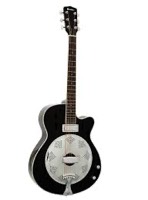 There are pickups made for resonator guitars. This is an economy model that features an electric guitar style pickup mounted near the neck. The body on this guitar is made of resin. You can play this as a normal electro acoustic but get the benefit of the resonator tone.
There are pickups made for resonator guitars. This is an economy model that features an electric guitar style pickup mounted near the neck. The body on this guitar is made of resin. You can play this as a normal electro acoustic but get the benefit of the resonator tone.









Tricone
Go back to Main Menu
I've finished my search.
Thank you for Asking Allegra.
Should you wish to Contact Us for any reason please follow the link to the contact form.
Should you wish to Contact Us for any reason please follow the link to the contact form.
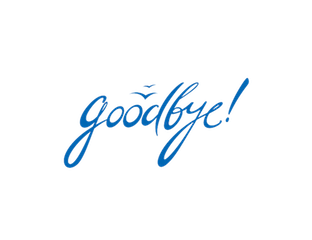
What else would you like to know about Electric Guitars?
Are there different types of Electric Guitar?
What type would suit a child?
Is it better to buy New or Second Hand?
How much do they cost and what else do I need?
How much do lessons cost?
Go back to Main Menu
There are many different shapes and styles to choose from but the 2 most recognisable types are the Fender Stratocaster and the Gibson Les Paul. These are what we call solid body guitars. You can also get Semi-Acoustic Electric Guitars that have a hollow body but magnetic pickups. Sometimes known generically as Jazz guitars although there are thin versions of these too. There have been thousands of different designs over the years, most based upon the 2 iconic shapes although there have been some strange shapes and obviously, some very pointy guitars. For the purposes of learning we recommend sticking to one of the common guitar shapes.
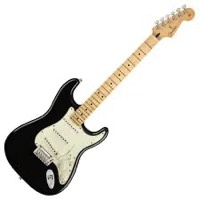 The Fender Stratocaster is one of the greatest guitars ever designed. It is easy to play whether sitting down or standing up, can come with standard single coil pickups or hum buckers, makes all of the right sounds and has been copied over the world which means there are lots of reasonably priced versions available to buy. These days, almost every make of Strat plays well with only a few exceptions. Bodies tend to be made of Alder or Basswood so they are not overly heavy.
The Fender Stratocaster is one of the greatest guitars ever designed. It is easy to play whether sitting down or standing up, can come with standard single coil pickups or hum buckers, makes all of the right sounds and has been copied over the world which means there are lots of reasonably priced versions available to buy. These days, almost every make of Strat plays well with only a few exceptions. Bodies tend to be made of Alder or Basswood so they are not overly heavy.
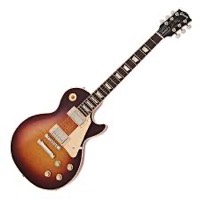 The Gibson Les Paul is the other iconic guitar. As popular as the Strat, this is the preferred choice for rock guitarists. It's, usually, mahogany body sometimes capped with maple lends itself to long sustained notes and combined with it's powerful hum buckers it is a beast of a guitar. The downside to this design is it's fairly weighty and not particularly comfortable when sitting down to play.
The Gibson Les Paul is the other iconic guitar. As popular as the Strat, this is the preferred choice for rock guitarists. It's, usually, mahogany body sometimes capped with maple lends itself to long sustained notes and combined with it's powerful hum buckers it is a beast of a guitar. The downside to this design is it's fairly weighty and not particularly comfortable when sitting down to play.
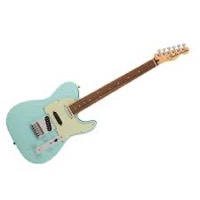




Other popular shapes shown below are not generally used when learning but deserve a mention none the less.

The Fender Telecaster

Gibson Jazz Guitar

Gibson ES335
I'd like to Book a Trial lesson
Go back to Main Menu
I've finished my search.
Thank you for Asking Allegra.
Should you wish to Contact Us for any reason please follow the link to the contact form.
Should you wish to Contact Us for any reason please follow the link to the contact form.

How old is your child?
What do you want to ask?
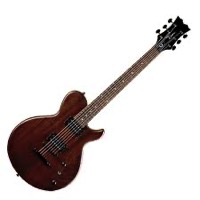 Your child is old enough to start learning on an electric guitar but in our opinion, most of the guitars made would be too heavy and bulky. Generally we don't recommend a make but in this case we make an exception as the guitar pictured is the only one we've found that will help your child to learn at this age. The Dean Evo XM is similar in shape to a Gibson Les Paul but has a thinner, lighter body, a thinner neck and an incredibly comfortable action. It's light weight means a younger child can handle it easily, it's smaller profile and narrow neck profile is easier for smaller hands and arms as well.
Your child is old enough to start learning on an electric guitar but in our opinion, most of the guitars made would be too heavy and bulky. Generally we don't recommend a make but in this case we make an exception as the guitar pictured is the only one we've found that will help your child to learn at this age. The Dean Evo XM is similar in shape to a Gibson Les Paul but has a thinner, lighter body, a thinner neck and an incredibly comfortable action. It's light weight means a younger child can handle it easily, it's smaller profile and narrow neck profile is easier for smaller hands and arms as well.
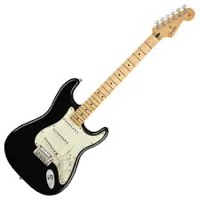 From the age of 11, most electric guitars are suitable for the younger student. I would steer clear of wide bodied jazz guitars and guitars of an unusual shape simply because when learning you play sitting down and it's easier to learn if you are comfortable. Ideally, of the 2 main styles of guitar or something similar would be suitable. Our preference would be a Fender Start shape as pictured. These guitars are shaped to fit the body, they are well balanced when sitting down, they usually play well and they make all off the right noises.
From the age of 11, most electric guitars are suitable for the younger student. I would steer clear of wide bodied jazz guitars and guitars of an unusual shape simply because when learning you play sitting down and it's easier to learn if you are comfortable. Ideally, of the 2 main styles of guitar or something similar would be suitable. Our preference would be a Fender Start shape as pictured. These guitars are shaped to fit the body, they are well balanced when sitting down, they usually play well and they make all off the right noises.
Your child is too young to start learning Electric Guitar at the moment. Electric guitars are too large to handle at this age. There have been some attempts to make small electric guitars but they have narrow fingerboards and are never in tune due to them having an incorrect string tension. We recommend starting on a 1/2 or 3/4 size Nylon strung Classical guitar at this age.
Visit our web site. Which Guitar
Visit our web site. Which Guitar
Unless your child is tall for their age it would be better for them to start learning on a 3/4 size guitar Acoustic or Classical Guitar. There have been Junior electric guitars made in the past but they suffer from poor tuning due to the lower string tension and hinder the speed at which your child will learn. If they definitely want to progress to electric guitar once they've had some lessons we would suggest getting a Parlour or Travel size Steel Strung Acoustic Guitar. This will be a guitar they can keep and use in the future.


I'd like to Book a Trial lesson
Go back to Main Menu
I've finished my search.
Thank you for Asking Allegra.
Should you wish to Contact Us for any reason please follow the link to the contact form.
Should you wish to Contact Us for any reason please follow the link to the contact form.
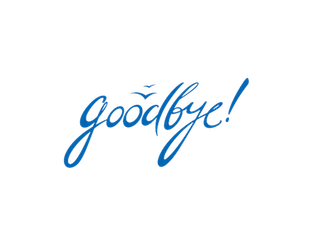
There are good and bad points to both buying a new guitar or buying a second hand one. If you are knowledgeable about the condition of electric guitars and can tell if it's been abused, check it plays correctly and ensure all of the electrical components are working then there are bargains to be had. It is often possible to pick up entire packs that will include an amplifier, guitar strap and sometimes even a cover. But, buyer beware. When you buy a new guitar, although it is still possble to get one with faults or one that plays badly, you do have a manufacturers guarantee and get get a replacement or your money back. The short answer is, if you know whet you're buying or if it's cheap enough to not worry if you need to discard it then second hand is a good route and you will find almost new examples where students have given up. The obvious extra to buying a marked second hand guitar is that it's not so important to keep it ina pristine condition, something that can be hard when your learning and not used to the shape and size of a guitar.
We offer a free service to check your guitar when you buy it. At the moment we can give advice over the internet but usually are willing to visit to look at a prospective purchase. We also offer a set up and repair service. Contact Us Here.
I'd like to Book a Trial lesson
Go back to Main Menu
I've finished my search.
Thank you for Asking Allegra.
Should you wish to Contact Us for any reason please follow the link to the contact form.
Should you wish to Contact Us for any reason please follow the link to the contact form.

Electric Guitars can be purchased by themselves or in packs with all the accessories you need. Guitars by themselves are priced from around £99 but as the cost of buying all the accessories would double that price it's better to look for a package. Package prices start from around £125 with loots of choice up to the £200 mark. Some are priced higher at £299 but they contain better quality accessories.
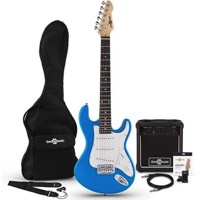

This is a typical pack. It's contents are:
- Electric Guitar
- Electric Guitar Amplifier
- Guitar Strap
- Guitar Cable
- Guitar Case
- Guitar Picks
- Spare Strings
This covers most of the items you would need. In reality, the basics are a guitar, an amplifier and a guitar cable or lead. The quality of the items in these packs depends upon the price paid but should be sufficiently good for you to start learning to play.
I'd like to Book a Trial lesson
Go back to Main Menu
I've finished my search.
Thank you for Asking Allegra.
Should you wish to Contact Us for any reason please follow the link to the contact form.
Should you wish to Contact Us for any reason please follow the link to the contact form.
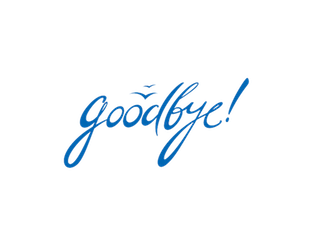
Trial lessons cost £10 for half an hour. Would you like to see our full list of fees?
Yes. Go to our Lesson Fees page.
I'd like to Book a Trial lesson
Go back to Main Menu
I've finished my search.
Thank you for Asking Allegra.
Should you wish to Contact Us for any reason please follow the link to the contact form.
Should you wish to Contact Us for any reason please follow the link to the contact form.

Trial lessons cost £10 for half an hour. Would you like to see our full list of fees?
Yes. Go to our Lesson Fees page.
I'd like to Book a Trial lesson
I've finished my search.
Thank you for Asking Allegra.
Should you wish to Contact Us for any reason please follow the link to the contact form.
Should you wish to Contact Us for any reason please follow the link to the contact form.

Thank you for Asking Allegra.
Should you wish to Contact Us for any reason please follow the link to the contact form.
Should you wish to Contact Us for any reason please follow the link to the contact form.
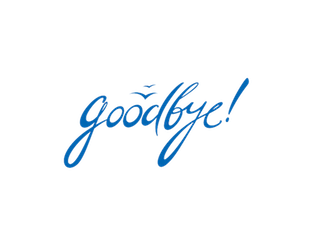
What else would you like to know about Bass Guitars?
Are there different types?
Are there different sizes?
What else would I need?
How much do they cost?
How much are lessons?
There are 3 main types. String or Upright Bass, Electric Bass Guitar and Acoustic Bass Guitar. Here at the Ampthill Music School we only teach Electric and Acoustic Bass Guitar.
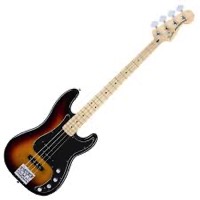 The Electric Bass guitar is a guitar shaped bass instrument designed to emulate the upright string bass. Being a lot more portable than the string bass, it has become the mainstay of most types of music. This is the standard Fender shape but basses come in many shapes and colours. The bass guitar is tuned an octave down from the electric guitar.
The Electric Bass guitar is a guitar shaped bass instrument designed to emulate the upright string bass. Being a lot more portable than the string bass, it has become the mainstay of most types of music. This is the standard Fender shape but basses come in many shapes and colours. The bass guitar is tuned an octave down from the electric guitar.
 Although initially made with 4 strings, 5 string basses are very popular as well. The 5th string is usually tuned to a B which is lower than the 4th string low of E. Basses are made that have 6 or even 7 strings. There are 8 string and 1 string basses where the strings are doubled or even tripled up for rock music. To learn bass, 4 strings are the optimum basses to have.
Although initially made with 4 strings, 5 string basses are very popular as well. The 5th string is usually tuned to a B which is lower than the 4th string low of E. Basses are made that have 6 or even 7 strings. There are 8 string and 1 string basses where the strings are doubled or even tripled up for rock music. To learn bass, 4 strings are the optimum basses to have.
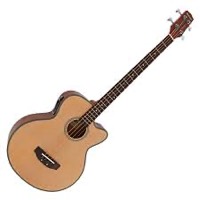 There are even Acoustic Basses made. These are acoustic guitar body styles with 4 or 5 bass strings. Most of these also have a pickup inside so they can be amplified. They are not as popular as the standard electric bass guitar and are usually bought to use in specific genres of music.
There are even Acoustic Basses made. These are acoustic guitar body styles with 4 or 5 bass strings. Most of these also have a pickup inside so they can be amplified. They are not as popular as the standard electric bass guitar and are usually bought to use in specific genres of music.
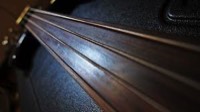 Not as popular and needing some experience to play are the fretless basses. These basses have no frets on the fingerboard so are similar to an upright bass. They can are available with 4, 5, 6 or even more strings in both regular electric and acoustic styles.
Not as popular and needing some experience to play are the fretless basses. These basses have no frets on the fingerboard so are similar to an upright bass. They can are available with 4, 5, 6 or even more strings in both regular electric and acoustic styles.




I'd like to Book a Trial lesson
Go back to Main Menu
I've finished my search.
Thank you for Asking Allegra.
Should you wish to Contact Us for any reason please follow the link to the contact form.
Should you wish to Contact Us for any reason please follow the link to the contact form.
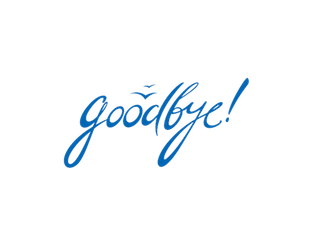
Yes. The size of the bass relates to the length of the neck between the bridge and the nut. Body shape and size has no bearing on the actual playing size.


- Short Scale is 30"
- Medium Scale is 32"
- Standard Scale is 34"
- Long Scale is 35"
What size would I need for my child?
Students as young as 7 years of age have started learning bass on a standard size bass. However, they are quite large and can be heavy depending on the type of wood they are made from. We have noticed some Short Scale basses being advertised as 3/4 basses which, although not correct, does suggest that Short Scale basses are more suited to the younger player. In actual fact, they are used by professional players as well because they give a very deep full sound from all of the strings due to their scale length. We have suggested the following size for your child but as in all things guitar related, it can depend on the size of your child and not just their age.
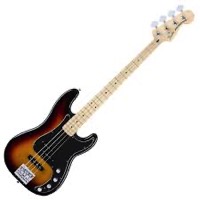 A Standard Scale bass guitar or even a Long Scale bass guitar would suit your child. The Standard Scale is the size of most bass guitars you see advertised. We would recommend going for a conventional shaped bass, not one with points or a funny shape, as they are easier to sit down with to learn.
A Standard Scale bass guitar or even a Long Scale bass guitar would suit your child. The Standard Scale is the size of most bass guitars you see advertised. We would recommend going for a conventional shaped bass, not one with points or a funny shape, as they are easier to sit down with to learn.
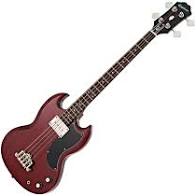 A Short Scale bass guitar would suit your child. These are a lot more manageable and less neck heavy when sitting down with them.
A Short Scale bass guitar would suit your child. These are a lot more manageable and less neck heavy when sitting down with them.
 We would not recommend buying your child a bass guitar at this age. However, if they desire to learn to play the bass a suitable alternative is the Bass Ukulele. These are tuned the same as a bass guitar and are strung with 4 strings. They usually have an internal pickup so they can be amplified. They are a little bit dearer than a comparable bass guitar but will last a lifetime. They were introduced to give an almost string bass sound and are used in this context by some pro bass players for just this purpose.
We would not recommend buying your child a bass guitar at this age. However, if they desire to learn to play the bass a suitable alternative is the Bass Ukulele. These are tuned the same as a bass guitar and are strung with 4 strings. They usually have an internal pickup so they can be amplified. They are a little bit dearer than a comparable bass guitar but will last a lifetime. They were introduced to give an almost string bass sound and are used in this context by some pro bass players for just this purpose.



I'd like to Book a Trial lesson
Go back to Main Menu
I've finished my search.
Thank you for Asking Allegra.
Should you wish to Contact Us for any reason please follow the link to the contact form.
Should you wish to Contact Us for any reason please follow the link to the contact form.
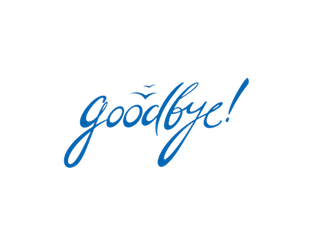
Electric basses need an amplifier to produce any decent sound. A small practice amp will be included if you buy a starter kit, if not, they are readily available. It is best to get the largest one you can afford. Bass frequencies take a lot of power to produce any real level of sound. General rule of thumb is that an electric guitar will need a 50/60 watt amp when compared to a bass guitar needing a 300 watt amp. 300 watts for bass is aabout the equivalent level to a drum kit. Obviously, smaller amps can be used in the home. It is best not to turn any bass amp up to full volume as it doesn't take too long to damage the loud speakers. It's sensible to get one slightly bigger than you think you need. It is also sensible to use a guitar strap even when sitting down as they are quite large instruments.
I'd like to Book a Trial lesson
Go back to Main Menu
I've finished my search.
Thank you for Asking Allegra.
Should you wish to Contact Us for any reason please follow the link to the contact form.
Should you wish to Contact Us for any reason please follow the link to the contact form.
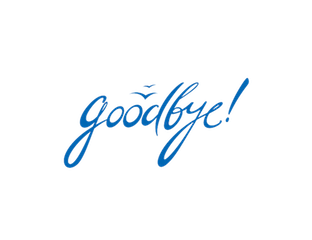
You can by a bass guitar from just under £100. The starting prices are similar regardless of whether they are Short or Standard Scale. Starter packs start around £125 but once again, you get what you pay for and it might be better to pay closer to £200 for one.
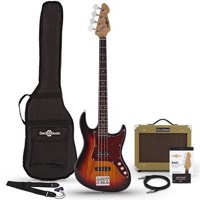 The average bass starter pack will include:
The average bass starter pack will include:

- Electric Bass Guitar
- Bass Guitar Amplifier
- Guitar Cable
- Guitar Strap
- Guitar Cover or Case
I'd like to Book a Trial lesson
Go back to Main Menu
I've finished my search.
Thank you for Asking Allegra.
Should you wish to Contact Us for any reason please follow the link to the contact form.
Should you wish to Contact Us for any reason please follow the link to the contact form.
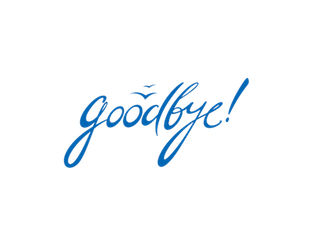
Trial lessons cost £10 for half an hour. Would you like to see our full list of fees?
Yes. Go to our Lesson Fees page.
No. I'd like to Book a Trial Lesson
Go back to Main Menu
I've finished my search.
Thank you for Asking Allegra.
Should you wish to Contact Us for any reason please follow the link to the contact form.
Should you wish to Contact Us for any reason please follow the link to the contact form.
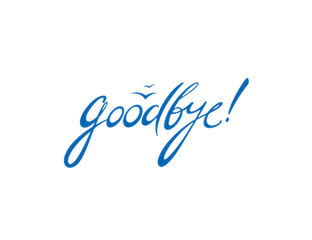
Thank you for Asking Allegra.
Should you wish to Contact Us for any reason please follow the link to the contact form.
Should you wish to Contact Us for any reason please follow the link to the contact form.

Thank you for Asking Allegra.
Should you wish to Contact Us for any reason please follow the link to the contact form.
Should you wish to Contact Us for any reason please follow the link to the contact form.
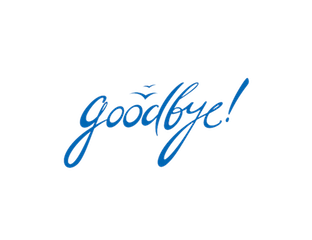
Ukuleles are made in 4 standard sizes.
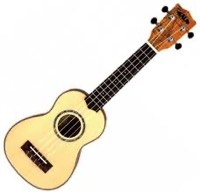 The most popular size is the Soprano. Although they look small they are still played by adults. The fingering is easy and the strings are soft. Soprano ukuleles can cost as little as £10 although you can pay up £500 for a high quality instrument. There are lots of reasonable ukuleles around the £20 to £30 price range. Our only advise to to look for a brand that fits Aquila Nylgut® strings. The sound difference is amazing and they feel nicer to play. The average size for a Soprano is 53cm long.
The most popular size is the Soprano. Although they look small they are still played by adults. The fingering is easy and the strings are soft. Soprano ukuleles can cost as little as £10 although you can pay up £500 for a high quality instrument. There are lots of reasonable ukuleles around the £20 to £30 price range. Our only advise to to look for a brand that fits Aquila Nylgut® strings. The sound difference is amazing and they feel nicer to play. The average size for a Soprano is 53cm long.
 The next size up is the Concert. Slightly larger overall, it gives a slighter deeper tone, has extra frets to the top of the fingerboard and slightly larger finger spacing. Concert ukuleles start at around £15 but we've seen models costing over £1,000. Again, look for models using Aqila Nylgut® strings. The average size for a Concert is 58cm long.
The next size up is the Concert. Slightly larger overall, it gives a slighter deeper tone, has extra frets to the top of the fingerboard and slightly larger finger spacing. Concert ukuleles start at around £15 but we've seen models costing over £1,000. Again, look for models using Aqila Nylgut® strings. The average size for a Concert is 58cm long.
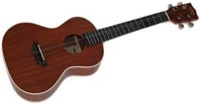 The Tenor is the next size up. These are noticeably larger with a fuller sound, larger fingerboard, thicker body etc. Not usually thought of as a starter instrument, there is no difference in the fingering or tuning of the Tenor ukulele. It's a much deeper sound though and possibly doesn't give quite the same sound when used as a solo instrument. The bodies are wider as well which means they are harder to hold or better when used with a strap. Tenor ukuleles can be found starting at £30 but we would suggest paying nearer the £100 mark to get a decent instrument. These can cost up to £2,500. The average size of e Tenor is 66cm long.
The Tenor is the next size up. These are noticeably larger with a fuller sound, larger fingerboard, thicker body etc. Not usually thought of as a starter instrument, there is no difference in the fingering or tuning of the Tenor ukulele. It's a much deeper sound though and possibly doesn't give quite the same sound when used as a solo instrument. The bodies are wider as well which means they are harder to hold or better when used with a strap. Tenor ukuleles can be found starting at £30 but we would suggest paying nearer the £100 mark to get a decent instrument. These can cost up to £2,500. The average size of e Tenor is 66cm long.
 The Baritone is the largest of the ukulele family. These are not very common and as the tuning is different from the other three sizes it would not be our choice to learn on. They are considerably larger as well. However, if you are a guitarist looking to extend your arsenal, then they are tuned the same as the highest strings on a guitar. We've seen these for as low as £40 but would not think of spending less than £150/£200 for one. The average size of a Baritone is 76cm long.
The Baritone is the largest of the ukulele family. These are not very common and as the tuning is different from the other three sizes it would not be our choice to learn on. They are considerably larger as well. However, if you are a guitarist looking to extend your arsenal, then they are tuned the same as the highest strings on a guitar. We've seen these for as low as £40 but would not think of spending less than £150/£200 for one. The average size of a Baritone is 76cm long.
 Due to it's popularity, there are now lots of ukuleles fitted with pickups so they can be played through an amplifier. Using a pickup means the body shape is not so important to the sound giving designers a free run. This is a guitar shaped use but you will find some very strange shapes and even uses that don't have a body at all.
Due to it's popularity, there are now lots of ukuleles fitted with pickups so they can be played through an amplifier. Using a pickup means the body shape is not so important to the sound giving designers a free run. This is a guitar shaped use but you will find some very strange shapes and even uses that don't have a body at all.





I'd like to Book a Trial Lesson
Go back to Main Menu
I've finished my search.
Thank you for Asking Allegra.
Should you wish to Contact Us for any reason please follow the link to the contact form.
Should you wish to Contact Us for any reason please follow the link to the contact form.

Children as young as 4 or 5 can play the ukulele but for lessons we would recommend 6 or 7. It does depend on the child though.
I'd like to Book a Trial Lesson
Go back to Main Menu
I've finished my search.
Trial lessons cost £10 for half an hour. Would you like to see our full list of fees?
Yes. Go to our Lesson Fees page.
No. I'd like to Book a Trial Lesson
Go back to Main Menu
I've finished my search.
Thank you for Asking Allegra.
Should you wish to Contact Us for any reason please follow the link to the contact form.
Should you wish to Contact Us for any reason please follow the link to the contact form.

Thank you for Asking Allegra.
Should you wish to Contact Us for any reason please follow the link to the contact form.
Should you wish to Contact Us for any reason please follow the link to the contact form.

We run group classes, individual lessons and one off special events on any Theory related subject.
- What we Teach
-
We can help you with lessons towards getting grades in Theory of Music Examinations, understanding how chords and scales work together, the differences between Notation and TAB, give guidance on writing your own parts or indeed, any other Theory related questions.
- The Trouble with TAB
-
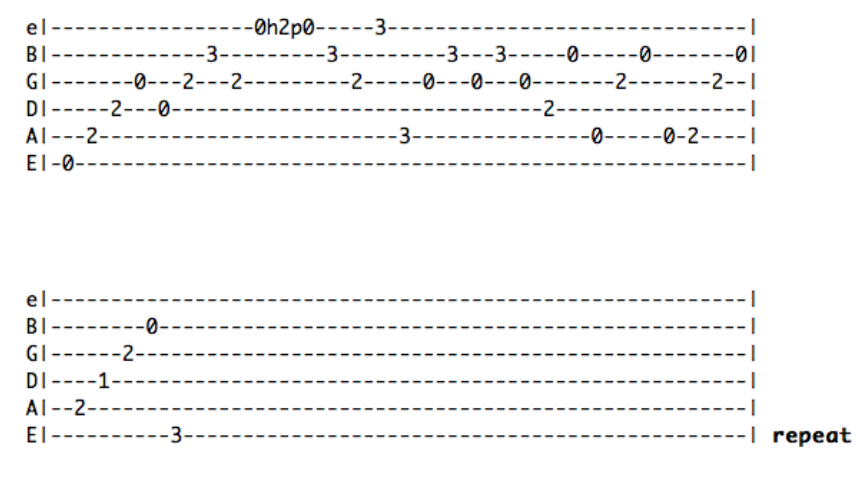
- Write TAB like a Pro
-
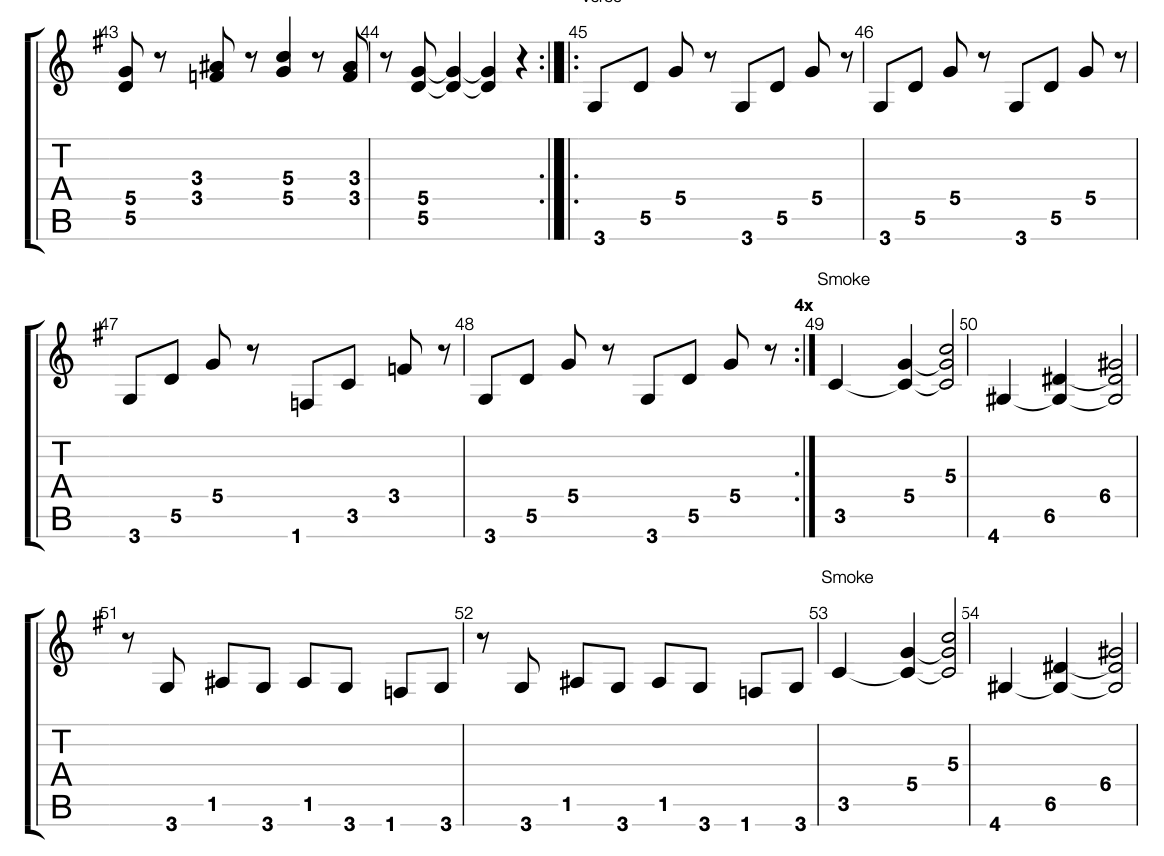
- Anyone for Bass TAB?
-
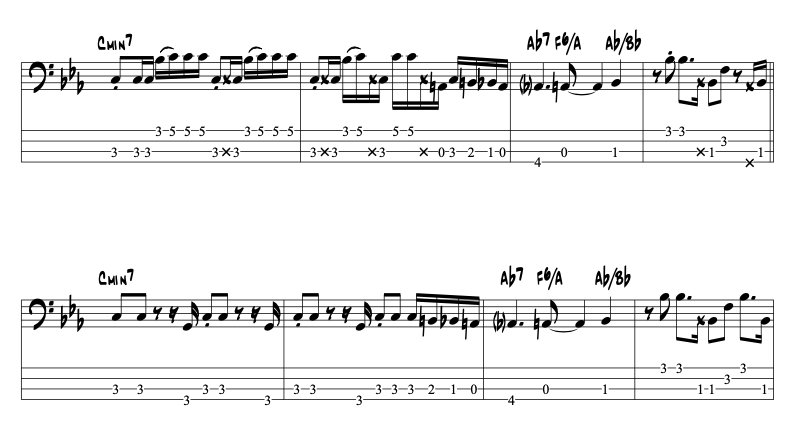
- We do Keys too!
-

- Let's get Mystical
-

- Or maybe a Question of Timing
-
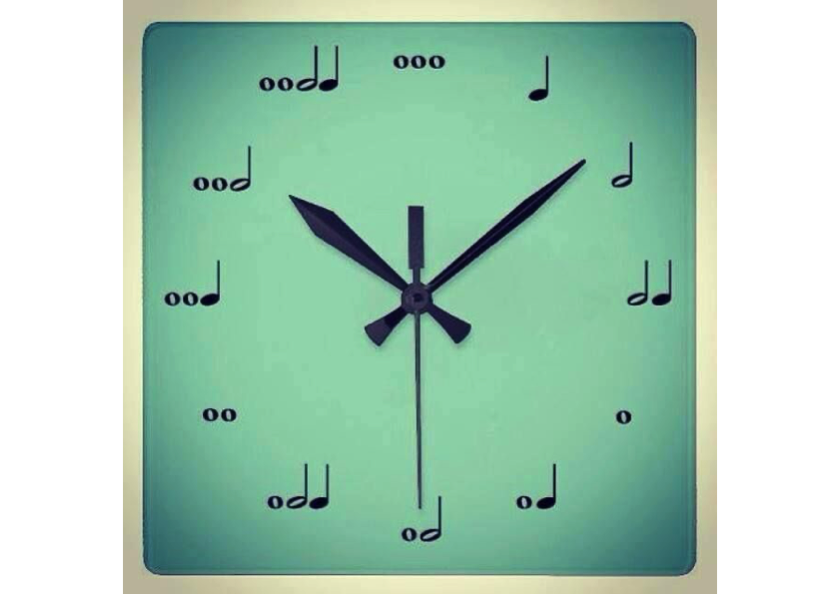
- Or what's the Key to Life?
-

- Modus Operandi - Yes. Modes!
-
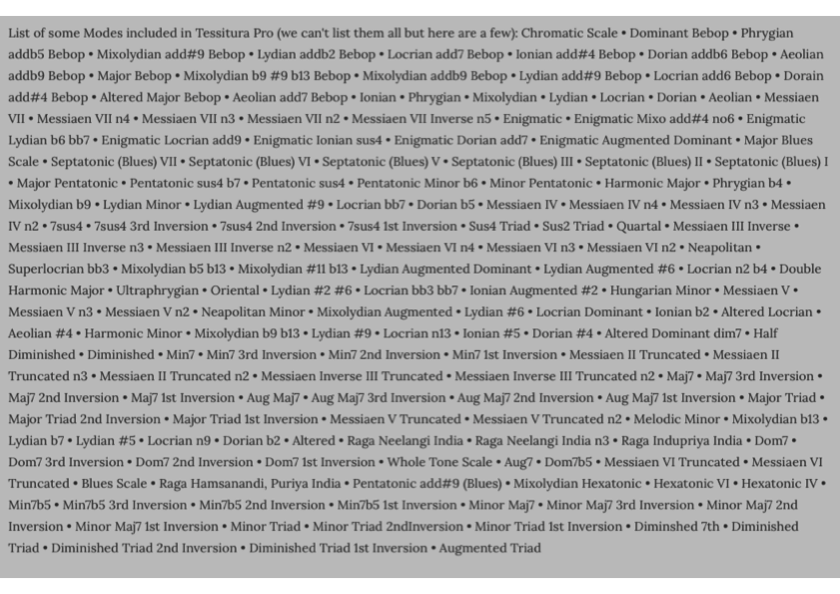
- I bet that last one scared you! Let's try again.
-
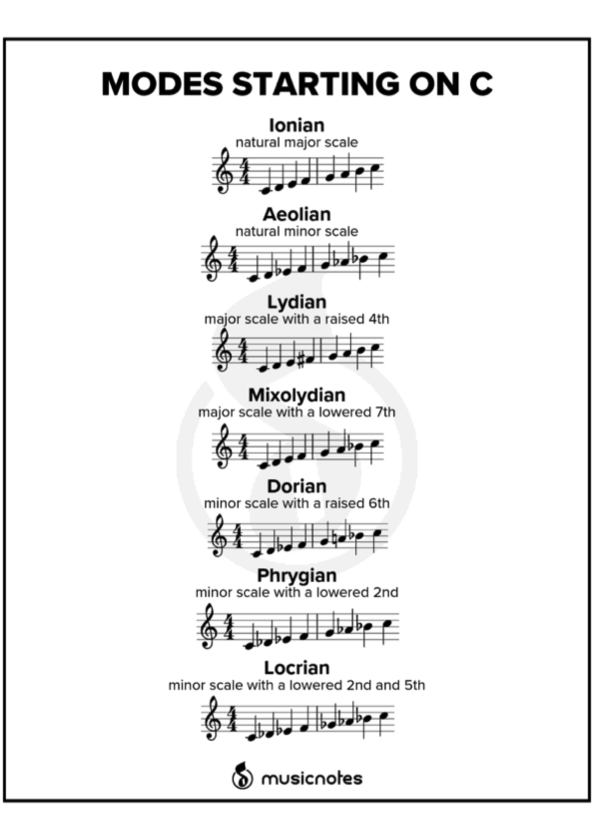
- Learn your ABC
-
Let's start from the very beginning….
I'd like to Book a Trial Lesson
I'd like information on the next group Theory Lessons
Go back to Main Menu
I've finished my search.
Thank you for Asking Allegra.
Should you wish to Contact Us for any reason please follow the link to the contact form.
Should you wish to Contact Us for any reason please follow the link to the contact form.

You do not need to download any software. Our system runs through your own browser.
What kind of computer do I need?
Do I need any specialised computer equipment?
How do I attend a lesson?
You can use any Mac or PC desktop. You can also use an iPad or Android tablet. In an emergency you can use your iPhone or Android moblie although this is not reommended.
- I have a Mac. What browser should I use?
-
We recommend using Chrome. Apple only enabled WebRTC, the software used by all online communications such as Skype, in Safari version 11+ so older iPads and iPhones aren't compatible. Additionally, Safari does not provide any information to troubleshoot problems whereas Chrome does.
- I have a windows PC. What browser should I use?
-
We recommend Chrome although Firefox works well too.
- I have an iPad. What browser should I use?
-
You should use Safari Version 11+, the built in browser.
- I have an Android tablet. What browser should I use?
-
We recommend Chrome which should be the default browser. It will work with Firefox but you may need a Chrome add on. This is available through a link in our technical help files.
- My computer is broken. Can I use a mobile phone?
-
Yes, you can. The built in browsers, Safari and Chrome and even Firefox all work but there are limitations in use.
I'd like to Book a Trial Lesson
Go back to Main Menu
I've finished my search.
Thank you for Asking Allegra.
Should you wish to Contact Us for any reason please follow the link to the contact form.
Should you wish to Contact Us for any reason please follow the link to the contact form.
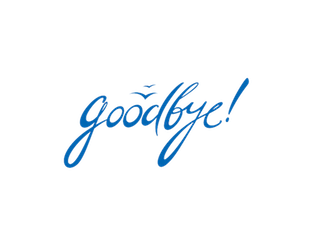
You do not need any special equipment. You will need:
Your instrument. An Acoustic or Classical Guitar or if playing electric, an Electric Guitar plus Amplifier.
A small practice amp is sufficient with electric guitar, and not too loud.
Headphones. A far better experience is achieved with headphones as it stops any audio looping and feedback. You can still partake without headphones satisfactorily but we do recommend them or a pair of ear buds.
A computer with a web cam or web cam facility or a tablet or mobile phone. If your computer does not have a web cam you can use your mobile to provide that facility whilst still using the larger computer screen for your lesson.
A comfortable seating position facing your computer screen.
If having a Piano or Keyboard lesson then a tablet is best sitting on top of the keyboard looking across the keys. With Piano it is definitely better to be wearing headphones.
I'd like to Book a Trial Lesson
Go back to Main Menu
I've finished my search.
Thank you for Asking Allegra.
Should you wish to Contact Us for any reason please follow the link to the contact form.
Should you wish to Contact Us for any reason please follow the link to the contact form.
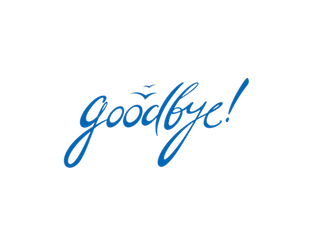
Lesson times are pre-arranged with you.
We prefer to book a regular lesson time with you. This should be at the same time on the same day of the week.
In good time to prepare for your lesson we will send you an html link to put in your browsers search bar. This will take you directly to your class. You may enter and leave your class at will prior to the lesson. It's a good idea to test your system prior to the lesson.
Your teacher will enter the class at the appointed time. Please have your instrument and/or any music or books ready.
Our system runs a three screen layout which features a video feed of your teacher and a feed from your own webcam, a whiteboard which can be used to show information as well as make note and a chat facility for written conversation. The lesson is in real time and you can chat with your teacher through the video feed. Your previous lesson material can be shown on the whiteboard. If your teacher shows you any pdf files they can be downloaded during the lesson. We will also email you any charts used during the lesson for you to practice.
At the end of the lesson you simply press the Leave Class button and the feeds will close on your computer.
If you join a special group class then we have the facility for you to put your hand up electronically so we may answer you questions. We run group classes with up to 12 students.
All of our teachers are Police Checked and have current DBS certificates.
Our lessons are informal and enjoyable. Feel free to ask us about anything to do with music. We are prepared to teach you anything you need to know. We are happy to transcribe songs for you to play as well.
I'd like to Book a Trial Lesson
Go back to Main Menu
I've finished my search.
Thank you for Asking Allegra.
Should you wish to Contact Us for any reason please follow the link to the contact form.
Should you wish to Contact Us for any reason please follow the link to the contact form.

Here are a range of solutions for you.
I'm having trouble connecting
Slow internet connection or heavy traffic online.
The internet is like a pipe that data passes down. Too much internet traffic and you will get delays. Your connection will impact your classes because audio and video are delivered through your web browser via the internet. The minimum speed for both uploads and downloads is 128kbps with a recommended speed of 300mkbps. If you are experiencing a slow internet connection you can ease the problem by turning your camera off and just use audio. Your teacher can do the same in extreme circumstances. It is good practice to enter your class early so you can test your connection. This is done automatically for you but if you experience any issues you can use our troubleshooting tool below.
Cutting out in class
Experiencing lost video/audio or slow speeds.
This could be caused by your Firewall. Slow speeds or drop outs can be caused by a firewall restricting traffic. You can run a test on your connection using our firewall tool below. Do you have anti virus software such as Norton or MacAfee? You can try disabling it to test see if that improves things.
I can't hear my teacher
Are you using headphones or an older PC with external speakers
- If you are wearing headphones the most likely issue is that your computer is confused by whether it should be using your headphones or the computer speakers. Plug your headphones into the computer, refresh the page then make sure you select headphones unless there is only one option.
- Some PCs have an audio driver to drive the external speakers that needs to be checked and reinstalled.
- You might have an issue with a personal firewall. Press button below to test firewall.
- If none of these cure the problem, a computer restart or at least a browser restart should work.
Is my browser up to date
Modern software requires the latest versions.
- Chrome needs to be version 75 or higher
- Firefox needs to be version 70 or higher
- Safari needs to be version 13 or higher
What do I need to use a tablet
Our software will run on Apple and Android tablets
On the iPad you have to use Safari version 11 upwards. Apple has made it so you can't use Chrome or Firefox on an iOS device. When you go through the equipment check on an iPad or iPhone you will get a Fail indicator on the equipment test. This warning must be skipped.
On Android, if you are not using Chrome you might need to download the Chrome App. If you are experiencing problems connecting on your Android tablet to mobile use the link below to get the dedicated LearnCube Chrome App.
On Android, if you are not using Chrome you might need to download the Chrome App. If you are experiencing problems connecting on your Android tablet to mobile use the link below to get the dedicated LearnCube Chrome App.
How do I pay for lessons
We make this really easy
We email you a payment link for the correct amount. This Invoice is payable via PayPal. You may pay using your own PayPal account or by credit or debit card. You do not need a PayPal account to pay us.
If you have chosen to pay monthly by Standing Order you can click on the link below for our bank details.
Should you wish to pay by Direct Debit we can set that up for you as well. Just visit our Lesson Fees Page.
If you have chosen to pay monthly by Standing Order you can click on the link below for our bank details.
Should you wish to pay by Direct Debit we can set that up for you as well. Just visit our Lesson Fees Page.
I haven't received a classroom link
You should receive this before your lesson starts
The classroom links are important as each class is specific to a particular student or group. Links are sent out either the day before or on the day of the lesson. If you have not received your link please contact us straight away. Your teacher will be in the classroom unaware that there is a problem.
If you can't contact us for any reason you can use our Public Link to enter our school. When entering you must then select your class to enter. Please do not enter another students class.
If you can't contact us for any reason you can use our Public Link to enter our school. When entering you must then select your class to enter. Please do not enter another students class.
I haven't found an answer to my problem
Oh dear. We thought we'd thought of everything
We're sorry you can't find the answer here in our help files. That does not mean we don't know the answer, we've just never been asked this question before.
Please contact us using the link below and let us know what your problem is. We will get back to you as soon as we can.
If your problem is urgent, telephone John on 07947980065 for an immediate response.
Please contact us using the link below and let us know what your problem is. We will get back to you as soon as we can.
If your problem is urgent, telephone John on 07947980065 for an immediate response.
I've finished my search.
Thank you for Asking Allegra.
Should you wish to Contact Us for any reason please follow the link to the contact form.
Should you wish to Contact Us for any reason please follow the link to the contact form.

Thank You for Visiting Technical Support
Here is some basic information to help you to start learning.
How do I tune my guitar?
Helpful Hint. Use a tuner when possible.
Your guitar has 6 strings. They are all different thicknesses. Starting from the lowest note, the thickest string, your guitar is tuned to;
E - A - D - G - B - E
It is best to tune your guitar using an electronic tuner. If you do not have one we can supply one from our accessory shop.
I've finished my search
Thank you for Asking Allegra.
Should you wish to Contact Us for any reason please follow the link to the contact form.
Should you wish to Contact Us for any reason please follow the link to the contact form.





